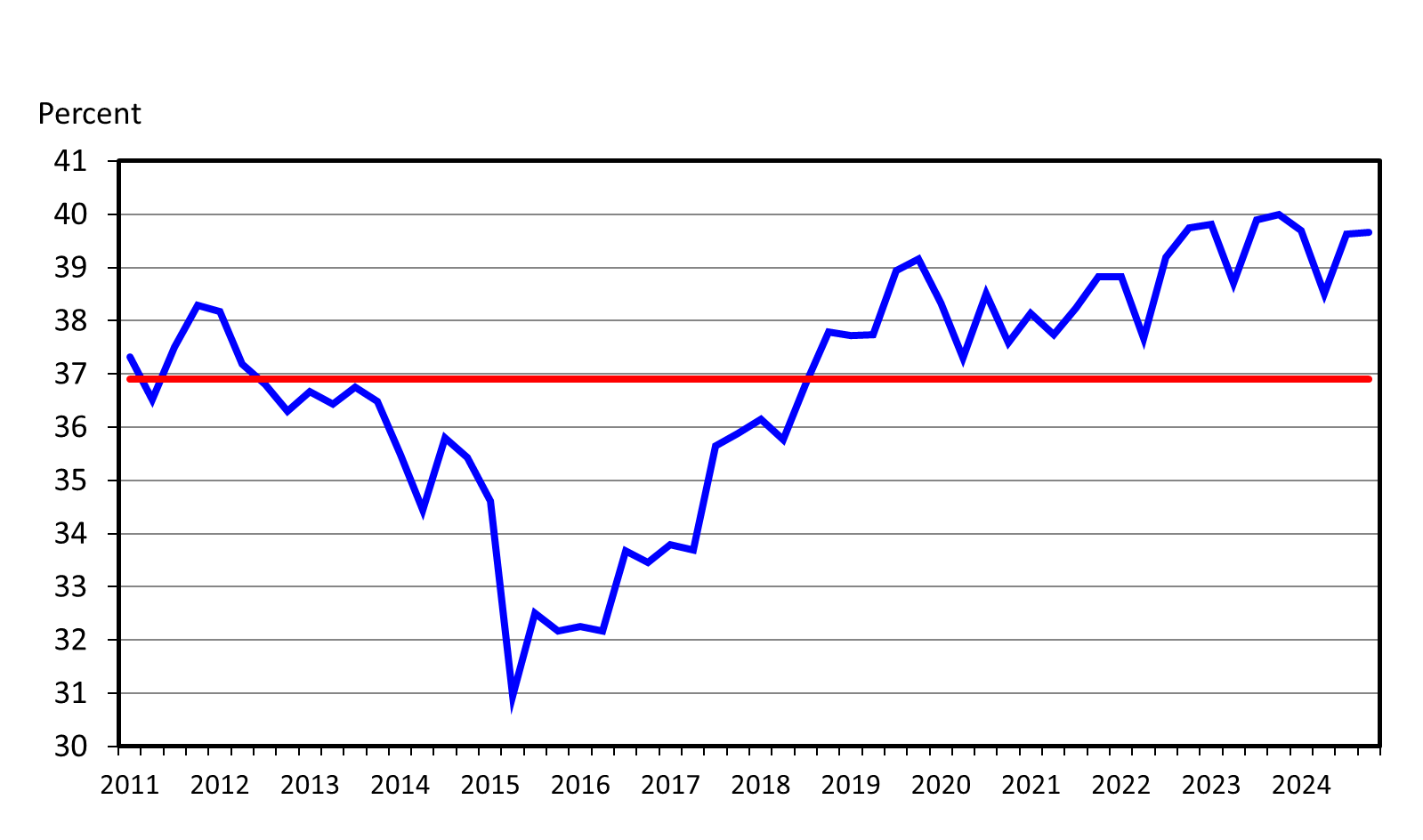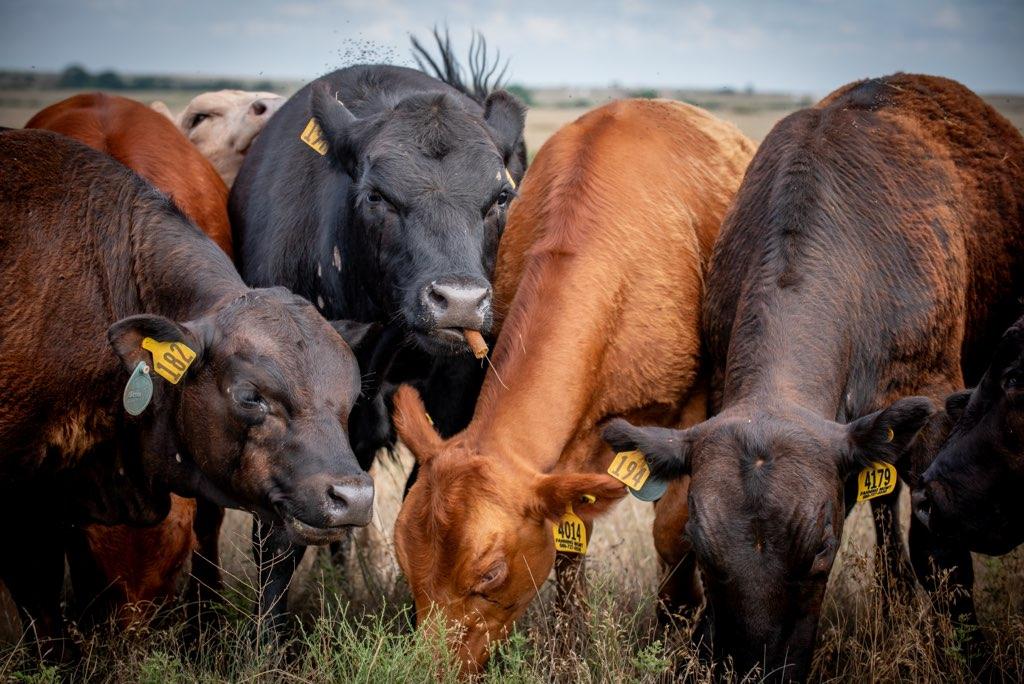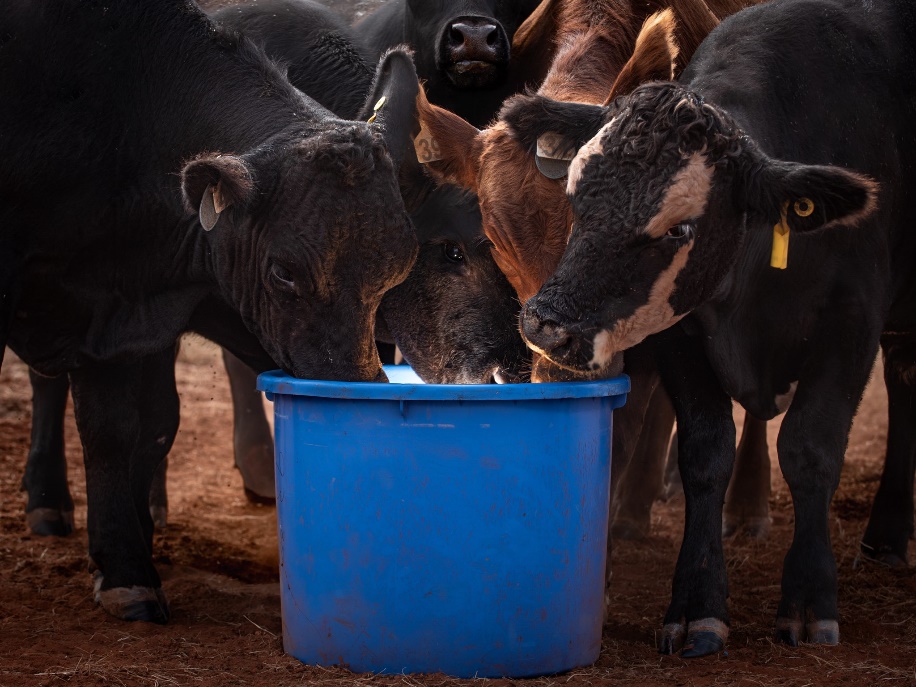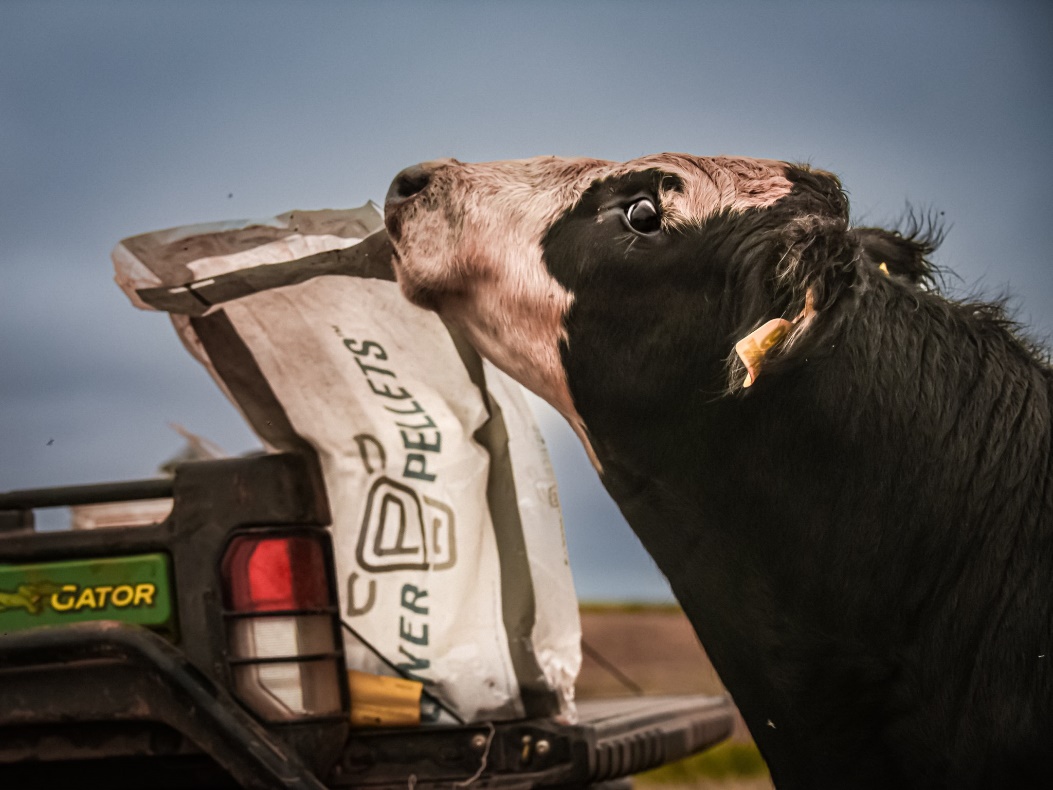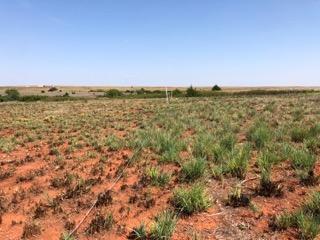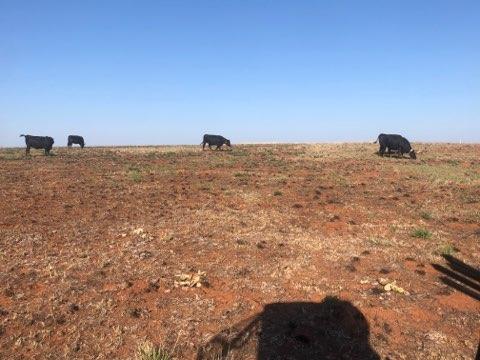Cow-Calf Corner | October 28, 2024
Heifer Feeding Keeps Feedlot Inventories Large
Derrell S. Peel, Oklahoma State University Extension Livestock Marketing Specialist
The latest USDA Cattle on Feed report showed an October 1 feedlot inventory of 11.6 million head, unchanged from one year ago. For the last 13 months, monthly feedlot inventories have averaged 100.7 percent of the prior year. Feedlots have remarkably been able to hold feedlot inventories steady despite declining feeder cattle supplies. Among major feedlot states, Texas was down year over year at 99 percent of last year, Kansas was 95 percent of last year, while Nebraska was 102 percent of one year ago and Colorado was 101 percent of last year. The Oklahoma feedlot inventory was 119 percent of one year ago and was the highest level since 2012.
September feedlot placements were 98 percent of last year. Total feedlot placements January - September are down 1.9 percent year over year. Feedlot marketings in September were 102 percent of last year. Total feedlot marketings in the first nine months of 2024 have been 0.7 percent lower compared to last year. The decrease in feedlot marketings matches the decrease of 0.7 percent in fed steer and heifer slaughter for the first 41 weeks of the year.
The quarterly inventory of heifers on feed was 4.6 million head, down 0.9 percent year over year. Heifers made up 39.7 percent of the total feedlot inventory on October 1, up slightly from the 39.6 percent in July. Heifers have averaged 39.5 percent of total feedlot inventories for the past ten quarters, since July 2022 and have been above the 15-year average of 36.9 percent since October 2018 (Figure 1).
Figure 1. Heifers On. Feed As A Percent Of Total Cattle On Feed, U.S., Beginning of Quarter.
Continued large inventories of heifers in feedlots confirms that little or no heifer retention is starting in 2024. Heifer slaughter is down 1.7 percent year over year thus far in 2024. Heifer slaughter would have to drop significantly more if heifers were being retained for breeding. In the most recent beef herd expansion, heifer slaughter decreased an average of just over ten percent each year in 2014 and 2015. Reemerging drought is changing the timing of feeder cattle marketing again in Oklahoma. September feedlot placements were down two percent year over year but were likely somewhat higher than otherwise due to a fall run of calves that started earlier than usual. In Oklahoma, September combined feeder auction totals were up 7.5 percent year over year. The next Cattle on Feed report in November may show an even bigger impact as the Oklahoma feeder auction total for October is 32 percent higher year over year. However, feeder auction totals are expected to drop sharply late in the year after the early calf marketing run is exhausted. The timing of calf marketing can be changed but the supply of feeder cattle is not larger. Maintaining feedlot inventories for the past year has masked the ever-tightening supply of feeder cattle in the country. The feeder cattle supply is an increasingly hollow ball that will implode at some point.
Beef - The Perfect Dietary Protein?
Mark Z. Johnson, Oklahoma State University Extension Beef Cattle Breeding Specialist
Every five years the U.S. Departments of Health and Human Services (HHS) and Agriculture (USDA) work together to update and release the Dietary Guidelines for Americans which should reflect the current body of nutritional science in order to provide advice on what to eat and drink to meet nutritional needs, promote health, and prevent disease. As the debate heats up at the federal level about how much beef will be included in the newest version, it seems appropriate to address the question in my title.
Is beef the perfect dietary protein? What are facts? First, beef is nutrient dense. Nutrient density refers to foods that are rich in nutrients but relatively low in calories. Beef is also highly digestible and humans are equipped with a digestive system well-designed to digest beef and use its nutrients. Beef gives your body the nutrients it needs with great taste and eating satisfaction.
The essential nutrients provided by beef include:
- Iron, which helps your body use oxygen.
- Choline, which supports nervous system development.
- Protein, which helps preserve and build muscle.
- Vitamins B6 and B12 help maintain brain function and give you energy. * Phosphorus, which helps build strong bones and teeth.
- Zinc, which helps maintain a healthy immune system.
- Niacin, which supports energy production and metabolism. * Riboflavin, which helps convert food into fuel.
- Selenium, which helps protect cells from damage
A three ounce serving of cooked beef provides only 175 calories but provides: 100% of your daily vitamin B12, as well as approximately half your daily needs of Zinc, Protein and Selenium. It would take eight 8 ounces of cooked chicken breast to get the same amount of iron as three ounces of beef, and 20 ounces of chicken to get the same amount of zinc as a three ounce serving of beef. In comparison, many sources of plant protein do not contain all the amino acids your body needs. Beef supplies more protein and nutrients in significantly fewer calories than plant proteins.
Research shows that a heart healthy diet and lifestyle that includes beef on a daily basis can improve cholesterol levels. Roughly half the fatty acids found in beef are monounsaturated fatty acids, the same kind found in olive oil.
Bottomline: Beef is a nutritional powerhouse! As beef producers, we can take pride in the fact that beef cattle can convert plant fiber into beef. More information about the nutritional benefits of beef is available at the reference below.
Reference:
https://www.oklabeef.org/nutrition
Oklahoma Initiatives to Address Rural Veterinary Issues
Rosslyn Biggs, DVM, Oklahoma State University Extension Beef Cattle Specialist
Over the past several years, Oklahoma legislative and agricultural industry leaders have invested in supporting the OSU CVM, its students, and graduates. During the 2023 session, the OSU Veterinary Medicine Authority (OSUVMA) was created through House Bill 2863 for the purposes of supporting the educational, research, and practice activities of the CVM. The OSUVMA secures long-term support for clinical faculty, student training, and the veterinary teaching hospital, similar to how the OSU Medical Authority and the University Hospitals Authority support the state's medical schools.
Additionally, during the 2024 legislative session, House Bill 3196, the Dr. Lee Denney Act, was passed to provide financial support for students pursuing a veterinary medicine degree at OSU to practice in rural Oklahoma communities and receive training to meet the needs of livestock producers. Preference for awards will be given to those students who are focused on large animal veterinary medicine, who are Oklahoma residents, and who agree to serve in a community in Oklahoma which has a population not to exceed 25,000. HB 3196 also provides language for support of large animal veterinarians currently practicing in similarly sized communities.
Oklahoma State University is joining a new pilot program from Farm Journal Foundation (FJF) to support veterinary students and early career veterinary graduates in their professional development and address the national shortage of rural, food-supply veterinarians. The university is one of 10 schools participating in the Veterinary Workforce Solutions Program. The program supports veterinary students across a number of areas, including tackling student debt and financial planning, developing business management skills, and learning how to engage with rural communities. More information, including educational modules for undergraduates, veterinary students, and veterinarians can be found at Veterinary Workforce Solutions Program Website.
The Oklahoma Department of Agriculture, Food, and Forestry is also collaborating with the FJF to assess Oklahoma's unique challenges, as well as mechanisms to support veterinarians, producers, and rural communities. Oklahoma is one of only three states participating in this initiative. Data collection is currently ongoing from veterinary and agricultural stakeholders. Information will be analyzed to develop measures to support the veterinary workforce and community readiness.
Summer Grazing Trials at the Marvin Klemme Range Research Station Coming to a Close for 2024
Paul Beck, Oklahoma State University Extension Beef Cattle Nutrition Specialist
Today we are pulling the stocker steers from experiments at the Oklahoma State University Marvin Klemme Range Research Station near Bessie (Southwest of Clinton). This year the project compared the extruded distiller's grains cubes hand fed at 2.5 pounds per calf per day to a self-fed extruded distiller's grains tub supplement offered at the same feeding rate. The project was managed by graduate research assistant Paul Vining (also coordinator of the OSU OQBN preconditioning program) with help from Area Livestock Extension Specialist Marty New and the early research at the station indicated that the economically optimal stocking rate is 5 acres per steer for growing calves through the summer. With drier weather patterns we decided to reduce the stocking rate by 40% to 7 acres per steer the last couple of years.
With over a month with no rain we are closing out the trials this year in Extreme Drought. The Mesonet station at Klemme recorded 11.3 inches of precipitation in the last 6 months which is 6.8 inches less than the average since 1991. The last recorded rainfall of 1.46 inches in August allowed us to finish the grazing season without providing hay or hauling water.
Here are some pictures of activities with the stocker cattle trial this year.
Another experiment managed by James Pixley a graduate research assistant from the Department of Natural Resource Ecology and Management along with Laura Goodman and Sam Fuhlendorf is looking at using targeted mowing or managed burns to enhance grazing distribution for mature beef cows.
We are expecting some exciting results from both of these ongoing experiments, so stay tuned!
| Market Partner | Location | Sales Date | 45-Day Wean Date | 60-Day Wean Date |
|---|---|---|---|---|
| OKC West Livestock Market | El Reno, OK | November 5, 2024 November 19, 2024 December 10, 2024 January 21, 2025 |
September 21, 2024 October 5, 2024 October 26, 2024 December 7, 2024 |
September 6, 2024 September 20, 2024 October 11, 2024 November 22, 2024 |
| McAlester Union Stockyards | McAlester, OK | November 12, 2024 February 4, 2025 April 8, 2025 |
September 30, 2024 December 21, 2024 February 22, 2025 |
September 13, 2024 December 6, 2024 February 7, 2025 |
| Payne County Stockyards | Perkins, OK | November 13, 2024 | September 29, 2024 | September 14, 2024 |
| Southern Plains Livestock Auction | Blackwell, OK | November 25, 2024 | September 29, 2024 | September 14, 2024 |
| LeFlore County Livestock Auction | Wister, OK | December 7, 2024 | October 23, 2024 | October 8, 2024 |
| Big Iron Auctions | Online OQBN Sale | November 19, 2024 | October 5, 2024 | September 20, 2024 |

